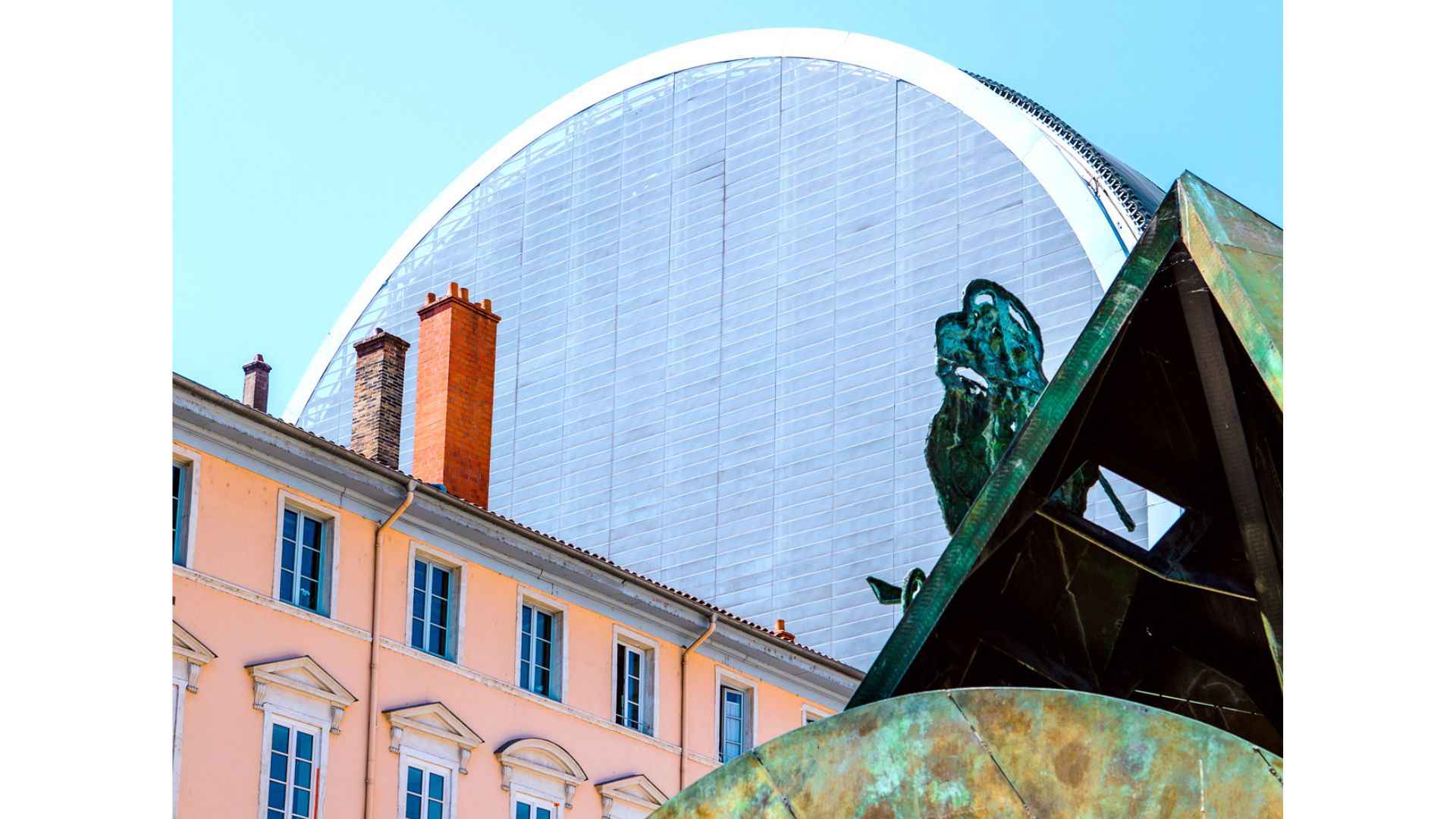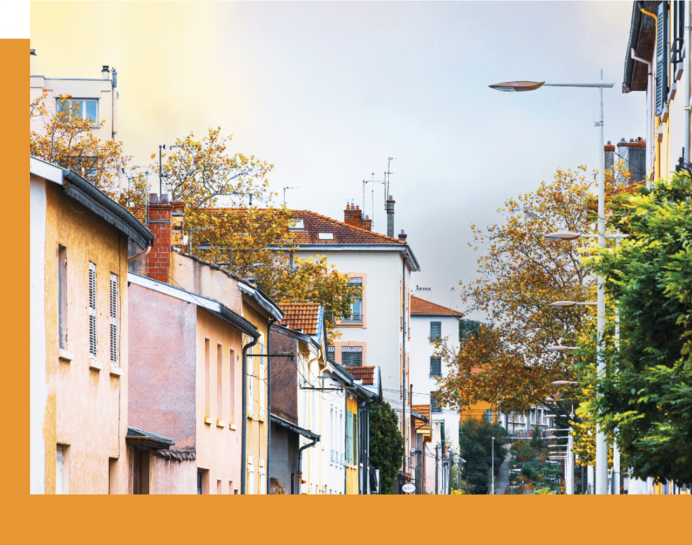[DISTRICTS]
2022-10-24
In the heart of the Presqu'île
From the bottom of the slopes of the Croix-Rousse to the confluence of the Saône and the Rhône, the Presqu'île stretches and changes, from a historic heart to a design district.

The city's nerve center is also home to small, intimate gardens and squares that give it a charming, village-like atmosphere prized by its residents.
The most famous district of the city
It is undoubtedly the most famous district of the city. The singer Benjamin Biolay even dedicated a song to it: Lyon Presqu'île. Sandwiched between the Rhône and the Saône, this area which extends from the town hall in the north to the confluence in the south, is composed of several districts: Terreaux, Jacobins, Cordeliers, Bellecour, Ainay, Perrache, Confluence...
Crisscrossed by wide Haussmann-style arteries, such as rue de la République and rue Edouard-Herriot, which were built during the 19th century, the Presqu'île is distinguished by its many shops, including the famous Carré d'or, the epicenter of luxury boutiques: Hermès, Louis Vuitton, Kenzo, Printemps... But also its bars, restaurants, theaters, cinemas... The Presqu'île is also famous for its historical monuments: the National Opera of Lyon, the Palais de la Bourse, the Jacobins Fountain, the Celestins Theater, and its emblematic squares: Bellecour, République, Terreaux, Carnot... At its southern tip, the new Confluence district with its futuristic-looking museum and buildings designed by the greatest international architects.
Do you like this article? Read our magazine
Confidential places
A real open-air museum, this heritage Presqu'île also hides a few more confidential places. The Place Sathonay, for example, lined with terraces, welcomes pétanque players on sunny days. Further down, the same village atmosphere can be found in the small square of the Broc'Café, a meeting place for the inhabitants of the district at aperitif time.
Another protected setting in this lively neighborhood, the garden nestled in the heart of the
of the Fine Arts Museum, invites you to relax. Just like the inner courtyards of the Grand Hôtel-Dieu, in particular the Grand Cloister and the Cour Saint-Louis. The conversion of this historic monument into a place for living and various activities is one of the last major projects of the Presqu'île. Another heritage masterpiece undergoing renovation, the Musée des Tissus et des Arts Décoratifs, will have a new design by architect Rudy Ricciotti for its reopening in 2026.
A district in constant evolution
To the south, the Perrache train station marks the transition between the historic Presqu'île and the Confluence. Behind the vaults, this neighborhood, once dedicated to industry, has undergone a profound metamorphosis. The former Saint-Paul Saint-Joseph prisons have been transformed into a university campus, housing and gardens.
The quays of the Saône, developed as a linear park along the river, are a delight for joggers and families out for a walk. The old Rambaud port and the salt marshes of the Midi have been replaced by shops, prestigious offices and the Sucrière event site. This is also where the famous orange cube is located, the most photographed modern building in the city.
Other remarkable buildings along the marina remind us that Confluence is a district of architectural experimentation both in terms of design and the environmental quality of its constructions. The latest example is Jean Nouvel's Ycone residence, the first designed by the architect, who says, "Confluence is an emblematic neighborhood that will become historic and representative of the 2000s and 2010s.
See all our properties for sale
The most famous district of the city
It is undoubtedly the most famous district of the city. The singer Benjamin Biolay even dedicated a song to it: Lyon Presqu'île. Sandwiched between the Rhône and the Saône, this area which extends from the town hall in the north to the confluence in the south, is composed of several districts: Terreaux, Jacobins, Cordeliers, Bellecour, Ainay, Perrache, Confluence...
Crisscrossed by wide Haussmann-style arteries, such as rue de la République and rue Edouard-Herriot, which were built during the 19th century, the Presqu'île is distinguished by its many shops, including the famous Carré d'or, the epicenter of luxury boutiques: Hermès, Louis Vuitton, Kenzo, Printemps... But also its bars, restaurants, theaters, cinemas... The Presqu'île is also famous for its historical monuments: the National Opera of Lyon, the Palais de la Bourse, the Jacobins Fountain, the Celestins Theater, and its emblematic squares: Bellecour, République, Terreaux, Carnot... At its southern tip, the new Confluence district with its futuristic-looking museum and buildings designed by the greatest international architects.
Do you like this article? Read our magazine
Confidential places
A real open-air museum, this heritage Presqu'île also hides a few more confidential places. The Place Sathonay, for example, lined with terraces, welcomes pétanque players on sunny days. Further down, the same village atmosphere can be found in the small square of the Broc'Café, a meeting place for the inhabitants of the district at aperitif time.
Another protected setting in this lively neighborhood, the garden nestled in the heart of the
of the Fine Arts Museum, invites you to relax. Just like the inner courtyards of the Grand Hôtel-Dieu, in particular the Grand Cloister and the Cour Saint-Louis. The conversion of this historic monument into a place for living and various activities is one of the last major projects of the Presqu'île. Another heritage masterpiece undergoing renovation, the Musée des Tissus et des Arts Décoratifs, will have a new design by architect Rudy Ricciotti for its reopening in 2026.
A district in constant evolution
To the south, the Perrache train station marks the transition between the historic Presqu'île and the Confluence. Behind the vaults, this neighborhood, once dedicated to industry, has undergone a profound metamorphosis. The former Saint-Paul Saint-Joseph prisons have been transformed into a university campus, housing and gardens.
The quays of the Saône, developed as a linear park along the river, are a delight for joggers and families out for a walk. The old Rambaud port and the salt marshes of the Midi have been replaced by shops, prestigious offices and the Sucrière event site. This is also where the famous orange cube is located, the most photographed modern building in the city.
Other remarkable buildings along the marina remind us that Confluence is a district of architectural experimentation both in terms of design and the environmental quality of its constructions. The latest example is Jean Nouvel's Ycone residence, the first designed by the architect, who says, "Confluence is an emblematic neighborhood that will become historic and representative of the 2000s and 2010s.
See all our properties for sale


